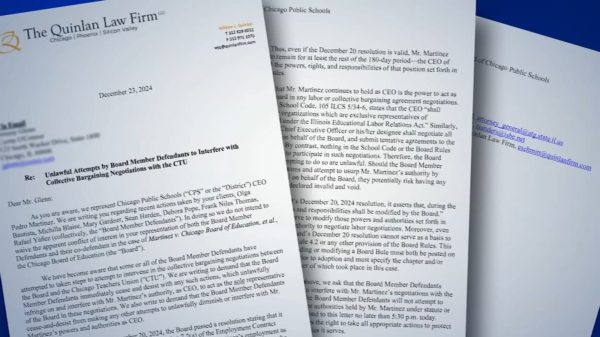Former Supreme Court justice Sandra Day O’Connor passed away on Friday at the age of 93. Before her groundbreaking role as the first female Supreme Court justice, Daily Kos Elections wishes to acknowledge her notable career in Arizona politics.

A testimony given by Sandra Day O’Connor, who would later become a Justice, during her confirmation hearing in 1981 (Source: Daily Kos)
The First Woman State Senate Majority Leader in 1973 Passed Away
Back in 1969, State Senator Isabel Burgess, the first Republican woman in the upper chamber, stepped down to join the National Transportation Safety Board. This allowed O’Connor, who was an assistant state attorney general and a member of the Young Republicans, to seize the opportunity. She persuaded the Maricopa County Board of Supervisors to nominate her for the eastern Phoenix seat, which was an appointment rather than an elected position. O’Connor didn’t have to campaign door-to-door or canvass in this Republican stronghold, as the district’s large property lots made it impractical. After winning her second term, O’Connor made history as the first woman state Senate majority leader in 1973.
The leader of the majority, as described by Alfredo Gutierrez, a Democrat who succeeded her, was focused on factual information and maintained a congenial demeanor. She was known for her ability to calm heated debates and was considered the adult in the room. Unlike other members of the leadership, she had a more subdued personality. Although she didn’t have a long tenure in the legislature, she made a significant impact. During a challenge for a position on the Maricopa County Superior Court in 1974, her opponent dismissed her as “not a real lawyer,” but she proved herself through her determined and serious demeanor. Despite not enjoying campaigning, she had a strong presence and a stellar reputation. In the end, she won the election with an impressive seventy percent of the vote, marking the most significant contest of her entire career.
There was a possibility that O’Connor may run for governor in 1978, but she ultimately decided against incumbent Bruce Babbitt. Babbitt had been elected to the position earlier in the year, following the passing of fellow Democrat Wesley Bolin. The leaders of the party attempted to persuade her to join, and Leo Corbet, who had previously served as the President of the Arizona Senate, informed O’Connor that this was the situation. “I suggested that it was time for Arizona to get a woman governor,” according to Corbet. Despite this, O’Connor maintained her skepticism regarding the concept. In her letter, Thomas expresses her concern that she would be forced to utilize her cash to compensate for the fact that she did not believe the state Republican Party would be able to provide her with the financial assistance she would require to topple the very popular governor. She was also concerned that she would have to endure a gruesome primary election against Evan Mecham, a fierce opponent from the far right, which would “leave scars.” “Meacham was a goofball car dealer who wore white socks with business suits,” her son told Thomas. “Meacham was a car dealer.” He was a lovable moron. But he was so insane that he would run away even if the establishment was willing to oil the skids for his mother.
O’Connor Entering Politics Advanced Her
When several prominent Republicans, including Senator Barry Goldwater, visited her to encourage her to run for government, O’Connor reportedly said, “Look, if you want me to run, I’ve got to be sure there is enough money.” Until you have collected enough money to launch a campaign, kindly don’t get in touch with me. Significant donors were worried about the prospect of having a governor with the name O’Connor, which is one of the reasons those pledges were never fulfilled for her. A state lawmaker who sympathized with the issue remarked, “They knew they couldn’t just walk into her office and get something done, right or wrong.”
Mecham was defeated by Babbitt by a score of 52-45, and O’Connor did not participate in the race. (Mecham was ultimately victorious in 1986; however, less than two years later, the Republican legislature removed him from office for misusing public funds and obstructing justice. Rose Mofford, the Democratic Secretary of State, who was the next in line for the governorship, became the first woman to lead the state.) O’Connor, on the other hand, thought that things may have been different if she had been the Republican nominee. A meeting that took place many years later was described by the United States Solicitor General Walter Dellinger. During that conversation, O’Connor “fixed me with those steely eyes and told me, ‘Babbitt was a good governor.'” However, I could take him.'”
O’Connor’s decision to abstain from running for office in 1978 was the moment that her career in Republican electoral politics came to an end; yet, this decision enabled her to advance farther in a different line of work. The next year, Babbitt appointed the moderate Republican to a seat on the Arizona Court of Appeals. She continued to serve in that capacity throughout the 1980 presidential election, during which the Republican nominee Ronald Reagan committed to nominate the first woman to the United States Supreme Court. As a result of Justice Potter Stewart’s resignation the next year, the newly elected president was allowed to fill this historic position, and he selected O’Connor to fill it.
READ ALSO: Los Angeles Politician Sentenced in Prison Due to Corruption















































